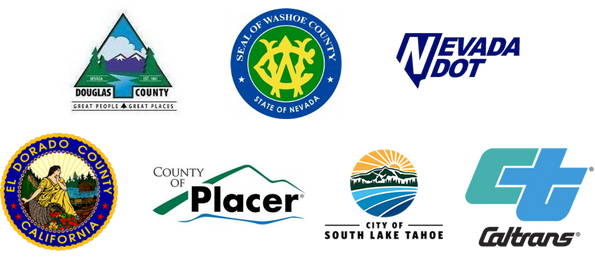Stormwater Program
If you’ve walked along Lake Tahoe’s beaches, you have probably spotted them: stormdrains discharging dirty water to Lake Tahoe from surrounding land areas. While stormdrains have the necessary function of draining water away from urban lands to prevent flooding, they often have the unintended effect of conveying pollution, such as sediment, nutrients, and trash. Left untreated, this pollution impacts Lake Tahoe.
Regional Stormwater Monitoring Program (RSWMP)
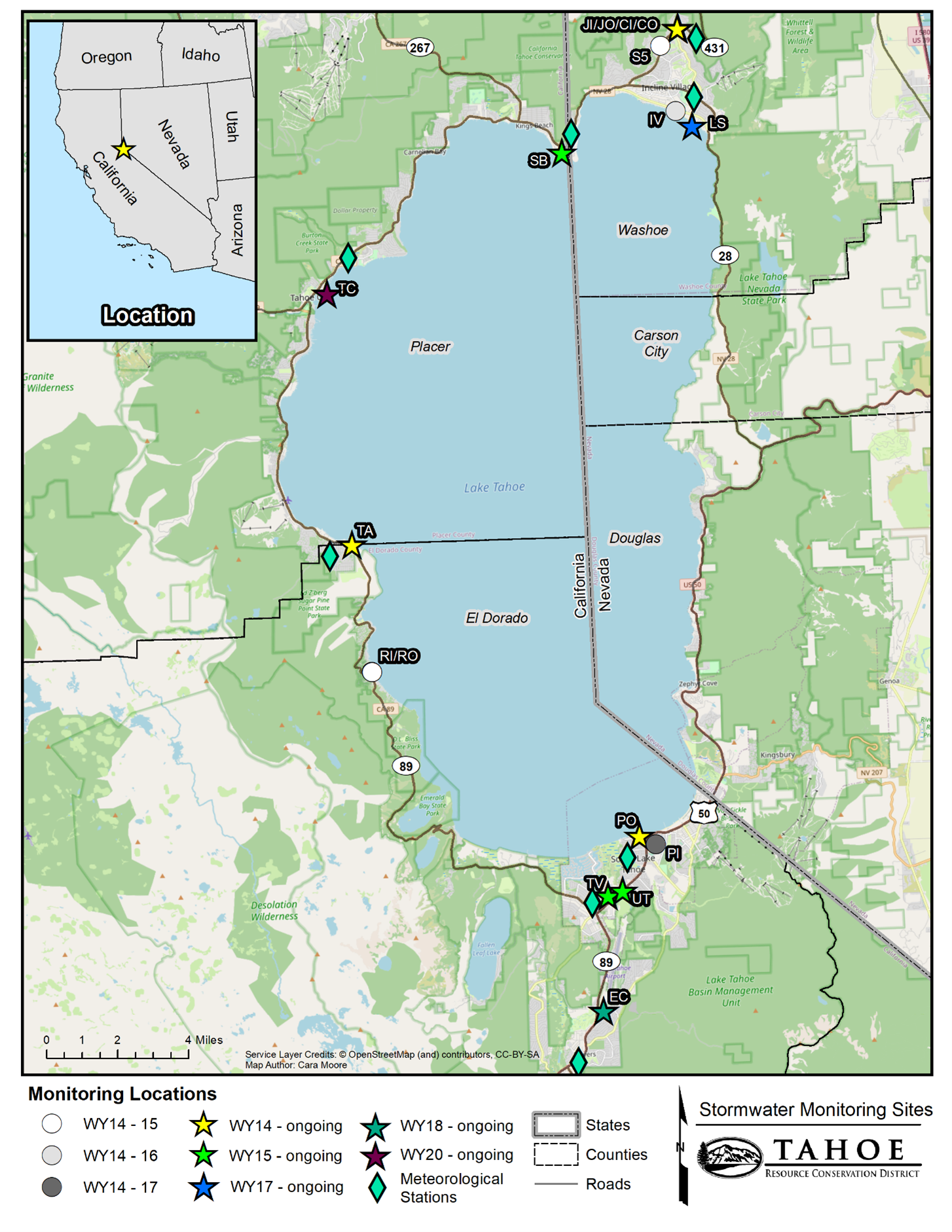
Tahoe RCD leads the Regional Stormwater Monitoring Program (RSWMP), which tracks urban stormwater runoff entering Lake Tahoe for pollutants such as nutrients and fine sediments. The majority of these pollutants originate from urbanized areas, particularly roadways. Established in 2015, RSWMP is a collaborative effort between Tahoe RCD and the seven local jurisdictions responsible for meeting the requirements of the Total Maximum Daily Load (TMDL). The TMDL is a plan aimed at returning Lake Tahoe’s renowned clarity to 1969 levels—approximately 100 feet of visibility.
TMDL regulations require California and Nevada jurisdictions to take measures to decrease pollutant loading to Lake Tahoe from urbanized areas by implementing pollutant controls to decrease fine sediment particle and nutrients in stormwater. These measures include infiltration basins and swales, filters, better erosion control, and improved traction abrasive application and recovery, among others. The TMDL requires that select urban catchments and Best Management Practices (BMPs) are monitored to ensure that these pollutant reduction strategies are having the desired effect. Currently, nine urban catchments are monitored for nutrients and sediments, seven for long-term status and trends at catchment outfalls, and two for BMPs.
Special Research Projects
Tahoe RCD also conducts special research projects on urban stormwater to advance the scientific understanding of factors affecting stormwater quality and how it can be better managed and treated before entering Lake Tahoe:
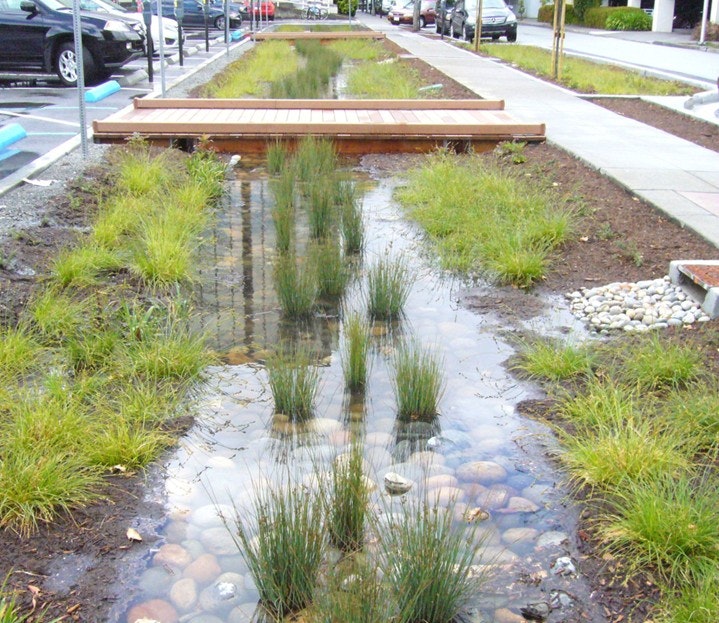
Lake Tahoe is one of the few places designated as an Outstanding Natural Resource Water under the Clean Water Act, meaning it must be protected from any water quality degradation and requires that a Total Maximum Daily Load (TMDL) be established. It is anticipated that climate change will change the hydrology of urban runoff in numerous ways, many of which will make it harder to infiltrate and treat stormwater runoff by traditional means. The overall goal of this project was to assess and inform stormwater management about changing conditions expected for urban hydrology in the Tahoe Basin, based on climate change projections, and to identify new treatment BMP options with enhanced pollutant removal performance potential applicable to cold weather environments.
Warmer temperatures cause snow levels to shift upslope and more winter precipitation to fall as rain rather than snow, leading to changes in the timing and amount of spring and summer runoff. Also, as climate warms, the atmosphere holds more moisture, which leads to larger precipitation events. A warmer climate can lead to higher flow extremes and greater event volumes over shorter runoff periods, likely increasing soil erosion and sediment and nutrient loading into Lake Tahoe.
Anticipating changes in the hydrology of these urban areas will be particularly important for urban stormwater management, as stormwater is still considered the main source of fine sediment particles loading into Lake Tahoe. The project examined how stormwater runoff is expected to change between 2030 and 2060, using advanced modeling tools already in use by local planners.
Focus was on three developed areas around the lake:
- Bijou Commercial Core (South Lake Tahoe)
- Lake Forest Highlands (North Shore)
- East Incline Village (Northeast Shore)
Results showed that annual stormwater inflows could increase at all locations. Existing stormwater treatment systems — called BMPs (Best Management Practices) are projected to capture significantly less runoff. In fact, untreated stormwater bypass volumes could increase by 98% to 337% on average across these urban areas. More runoff means more pollutants. While not modeled directly, it's expected that sediment and nutrient loads could rise substantially unless new strategies are put into place.
Improved pollutant removal can likely be achieved through refinement of current practices as well as through implementation of new BMP technologies such as:
- Bioinfiltration systems (rain gardens) soak water into the ground.
- Biofiltration systems optimized for phosphorus removal — a key nutrient affecting Lake Tahoe’s clarity.
- Regenerative stormwater conveyance that mimics natural stream processes.
- Biochar amendments that enhance soil’s ability to filter pollutants.
- Innovative wetland solutions, such as modular wetlands, floating wetlands, and subsurface systems.
One particularly promising strategy is a treatment train approach — where different types of treatment steps are used in sequence, much like modern wastewater treatment plants. Systems designed with sediment forebays (to trap heavier materials first) and peak flow controls (to better manage big storms) could greatly improve stormwater quality and resilience.
Protecting Lake Tahoe’s iconic clarity will require innovating and adapting our stormwater systems to keep pace with the realities of a changing climate.
Plastics are everywhere — from water bottles and grocery bags to PVC pipes and to-go containers. Over time, these materials break down into microplastics, tiny plastic particles between 1 micrometer and 5 millimeters in size. These particles are now widespread in the environment, where they can release harmful chemicals and be ingested by wildlife, eventually making their way into the food chain and impacting human health.
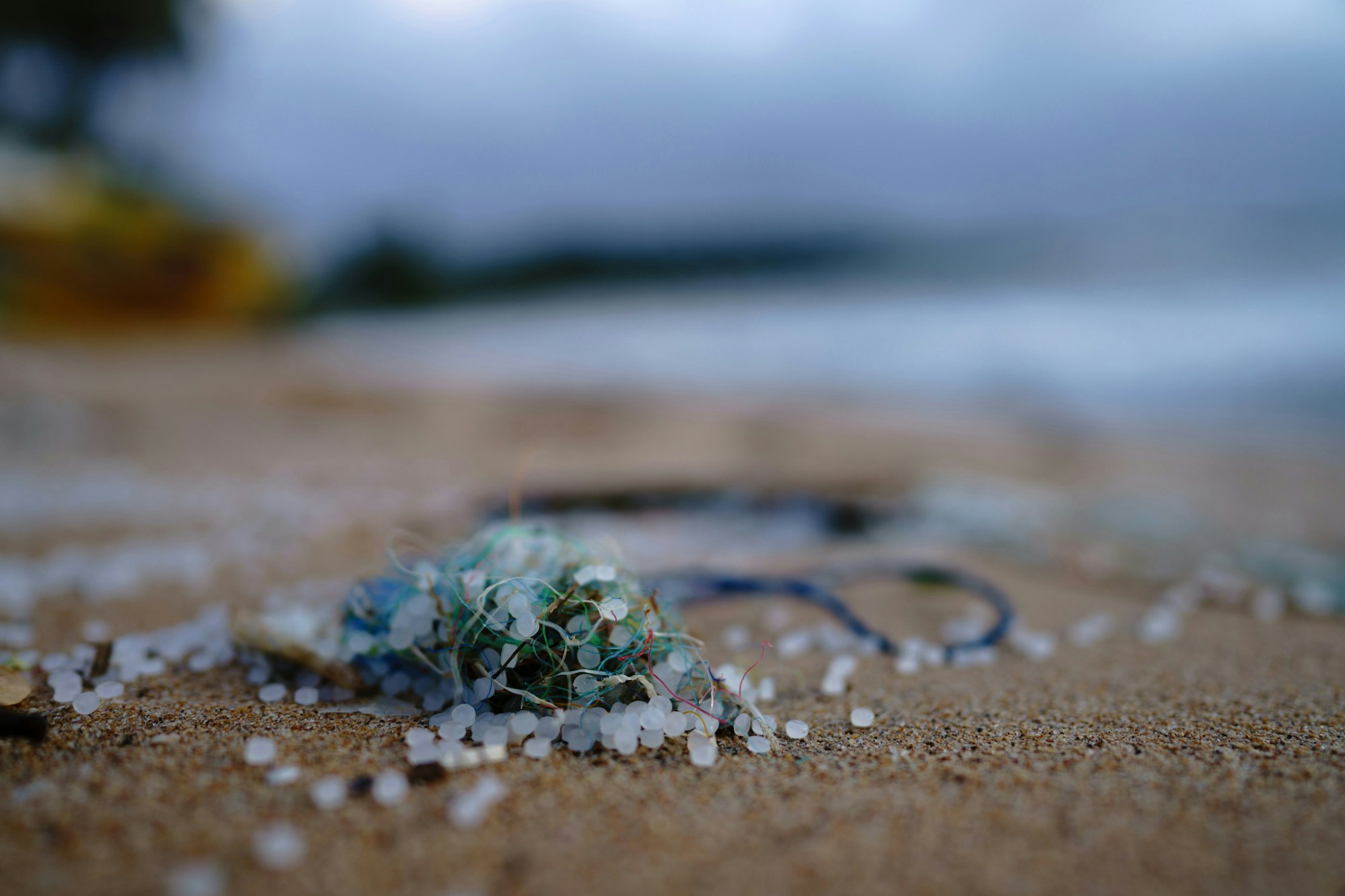
A study of 38 lakes and reservoirs around the globe found that Lake Tahoe was the third most contaminated waterbody with microplastic concentrations of 5.5 particles/m3. Much of the plastic that was found in Lake Tahoe’s lakebed was considered “other” (plastic litter that did not fall in another category) followed by food containers, bottles, plastic bags, and toys.
To better understand how plastics and emerging pollutants are entering Lake Tahoe, Tahoe RCD is partnering with the Desert Research Institute (DRI) in Reno, Nevada, on a new study. Researchers are collecting and analyzing stormwater runoff for microplastics and a chemical called 6PPDQ.
6PPD is an additive used in car tires to prevent cracking and wear. However, when exposed to the air, it reacts with ozone and transforms into 6PPD-quinone (6PPDQ). During rainstorms, this chemical is washed off roadways into streams and lakes. Recent research has shown that 6PPDQ is highly toxic to many fish species and can also harm other forms of aquatic life.
While results from the Tahoe Basin analyses are still pending, this research will eventually give resource managers the tools they need to develop strategies to reduce microplastic pollution and chemical contamination in Lake Tahoe’s stormwater — helping to protect the lake’s unique ecosystem for future generations.
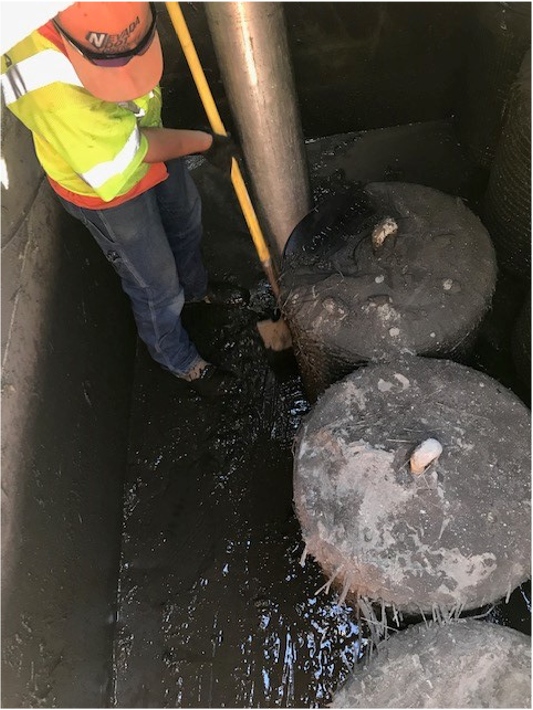
In 2013, the Nevada Department of Transportation (NDOT) installed two side-by-side stormwater treatment vaults on State Route 431 (SR431) in Washoe County above Incline Village, Nevada. The purpose of the project was to evaluate and compare the effectiveness of two adjacent stormwater treatment vaults, the Contech Media Filtration System (MFS) and the Contech Jellyfish, each containing a different type of filter. Both filter types are designed to remove fine sediment particles, the particles that are primarily responsible for the loss of lake clarity.
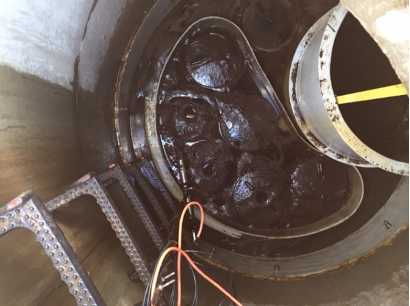
NDOT wanted to investigate which filter type worked best for the type of stormwater runoff generally associated with a relatively steep highway with moderate to high traffic density and near 100% impervious surface. Stormwater from this type of roadway tends to have high sediment loads, primarily due to the road sanding necessary to keep vehicles from sliding on ice and snow in the winter.
Stormwater runoff from approximately 1.4 acres of traffic lanes enters a transverse drain adjacent to SR431. It then flows through a pipe to a splitter vault that theoretically routes equal amounts of flow through two inflow pipes to each type of filtration vault. After the runoff has been treated in each filter vault, the flow exits through respective pipes that lead to a perennial stream called Deer Creek which discharges to Lake Tahoe.
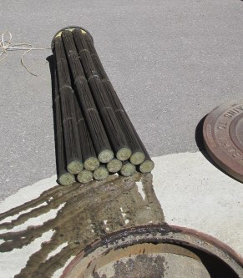
The inflows and outflows of both vaults have been monitored for the last seven years. We have learned that though sediment removal efficiencies are similar when both vaults are clean, the Jellyfish gets overwhelmed by accumulated sediment more easily and needs to be maintained more often. The Jellyfish vault is much smaller than the Contech MFS vault and can therefore not accommodate as much accumulation before clogging. However, the Jellyfish filters can be cleaned and reused, while the MFS filters must be replaced. Therefore, in a location with lower sediment loads, the Jellyfish may be the cheaper option.
To view the NDOT SR431 seasonal reports visit Publications & Helpful Links


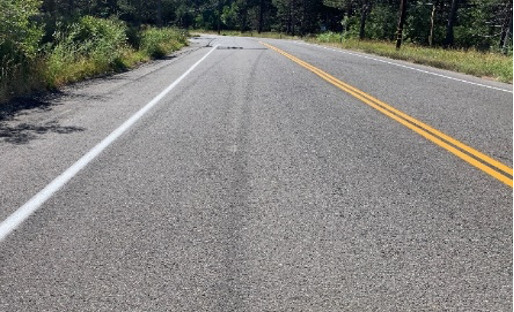
Prior to the summer of 2018, Elks Club Drive was in poor condition, covered in cracks and potholes. Visual observations and a pilot study on Pioneer Trail in El Dorado County from 2012-2014 suggested that the degraded road surface itself was contributing a substantial amount of fine sediment to stormwater runoff. The Elks Club monitoring site was established to determine if improving road conditions would result in decreased FSP loads in stormwater runoff from this catchment. In the summer of 2018, El Dorado County completed an erosion control project in this catchment that included completely reconstructing Elks Club Drive and armoring the road shoulders and roadside channels with asphalt and rocks.
A repaved road is more durable and less likely to deteriorate under the heavy equipment and plow blades used for snow removal operations because smooth surfaces are easier to sweep and more road abrasives can be recovered. The primary purpose of this monitoring site is to conduct pre and post project monitoring and perform source apportionment analyses on runoff samples to determine what portion of the fine sediment originates from native soil (road shoulder erosion), traction abrasives (road sand), and asphalt plus asphalt binder (the road itself).
Post project data collected at Elks Club indicates that repaving a road contributes to improved water quality (less sediment). In the first year (2019), normalized total suspended sediment (TSS) and normalized fine sediment particle (FSP) loads (pounds per acre per inch of precipitation) were reduced by 90% and 93% respectively. Improved pavement condition should be recognized as a water quality BMP, not only to garner credits for the Lake Tahoe TMDL Clarity Crediting Program but also to potentially open water quality improvement funds for road maintenance and vice versa.
New roads would be beneficial for public safety, vehicle maintenance costs, aesthetic appeal, driving pleasure, road maintenance and sweeping operations, long term durability, snow removal operations, stormwater quality, and lake clarity.
Lake Tahoe was designated as an Outstanding Natural Resource Water by the Clean Water Act which allows for no degradation and requires that a Total Maximum Daily Load (TMDL), a plan to restore Lake Tahoe’s famed clarity to 1970’s levels over a 65-year period, to be established.
Jurisdictions around the lake are already meeting tougher pollutant load reduction targets, but the "easy" improvements have largely been completed. If the potential impacts of climate change are included, such as more extreme precipitation events that result in higher urban runoff volumes and increased pollutant loading, these targets will be even harder to attain. Even though average lake clarity has stabilized in the past decade, significant improvements have not yet been achieved. To keep moving forward, jurisdictions need smarter, more efficient stormwater treatment solutions.
One promising innovation? Biochar.
Biochar is an emerging technology that has been shown to enhance pollutant removal in biofiltration systems. Biochar is a material made by pyrolyzing organic waste — heating it to over 500°C in low-oxygen conditions. This process creates a material packed with internal pores and charged surfaces, giving it a large surface area perfect for trapping pollutants. Common organic waste material includes:
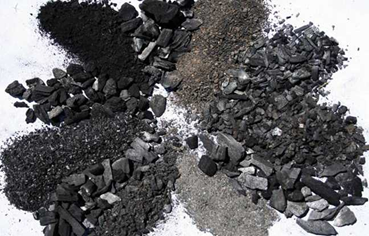
- Sawmill waste
- Crop residues
- Wood scraps
- Animal or human sludge
Because of its unique structure, biochar can:
- Enhance stormwater infiltration
- Increase water retention for plant growth
- Support beneficial microbial communities
- Remove pollutants like fine sediment particles, nitrogen, phosphorus, heavy metals, and organic contaminants
Unlike traditional geomedia like sand (which allows infiltration but little pollutant storage) or clay (which stores pollutants but impedes flow), biochar offers both: high hydraulic conductivity and high storage capacity.
Bourne Meadow Basins Biochar Effectiveness Project
The Bourne Meadow Basins Biochar Effectiveness Project builds on the Stormwater BMPs in a Changing Climate project by assessing the in-situ effectiveness of amending the underlying soil of stormwater basins with biochar which was researched in the first project. The assessment will focus on biochar’s ability to enhance stormwater infiltration and pollutant removal. If so, then amending existing basins with biochar could be a relatively simple and cost-effective retrofit that allows implementing jurisdictions to continue to meet increasingly demanding pollutant load reduction targets without having to build expensive new capital improvement projects for stormwater management, supporting the Lake Tahoe TMDL and improving resiliency to climate change.
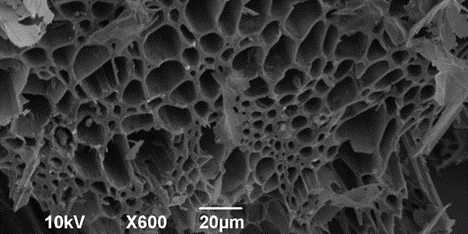
This project aims to demonstrate that a biochar-amended basin can achieve higher pollutant load removal efficiency compared to an unamended basin. For Lake Tahoe Basin, this could mean:
- Greater reductions in fine sediment, which is responsible for up to two-thirds of lake clarity loss
- Better nitrogen and phosphorus removal, reducing harmful algal blooms
- More climate-resilient stormwater systems capable of handling extreme runoff events
If successful, biochar could become a cost-effective, scalable solution for meeting the Tahoe Basin’s increasingly demanding water quality goals.
Partners
